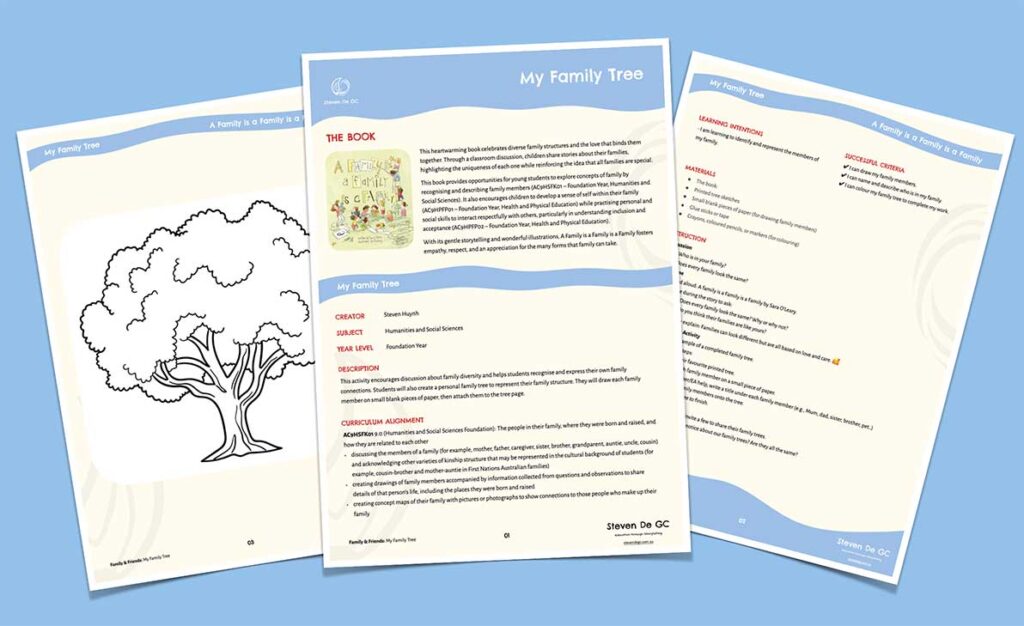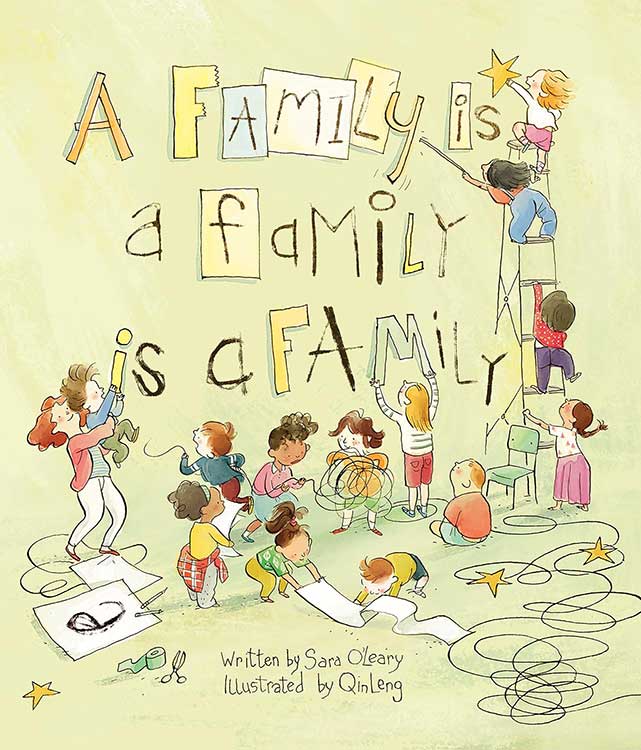Written by Sara O’Leary, illustrated by Qin Leng, published by Groundwood Books
This heartwarming book celebrates diverse family structures and the love that binds them together. Through a classroom discussion, children share stories about their families, highlighting the uniqueness of each one while reinforcing the idea that all families are special.
This book provides opportunities for young students to explore concepts of family by recognising and describing family members (AC9HSFK01 – Foundation Year, Humanities and Social Sciences). It also encourages children to develop a sense of self within their family (AC9HPFP01 – Foundation Year, Health and Physical Education) while practising personal and social skills to interact respectfully with others, particularly in understanding inclusion and acceptance (AC9HPFP02 – Foundation Year, Health and Physical Education).
With its gentle storytelling and wonderful illustrations, A Family is a Family is a Family fosters empathy, respect, and an appreciation for the many forms that family can take.





![[T4R] A Family is a Family is a Family: L5 Summarising [T4R] A Family is a Family is a Family: L5 Summarising](https://stevendegc.com.au/wp-content/uploads/2025/03/T4R-A-Family-is-a-Family-L5-Cover-1024x626.jpg)
![[T4R] A Family is a Family is a Family: L4 Connecting to a Similar Text [T4R] A Family is a Family is a Family: L4 Connecting to a Similar Text](https://stevendegc.com.au/wp-content/uploads/2025/03/T4R-A-Family-is-a-Family-L4-Cover-1024x626.jpg)
![[T4R] A Family is a Family is a Family: L3 Making Personal Connections [T4R] A Family is a Family is a Family: L3 Making Personal Connections](https://stevendegc.com.au/wp-content/uploads/2025/03/T4R-A-Family-is-a-Family-L3-Cover-1024x627.jpg)
![[T4R] A Family is a Family is a Family: L1 Background Knowledge [T4R] A Family is a Family is a Family: L1 Background Knowledge](https://stevendegc.com.au/wp-content/uploads/2025/03/T4R-A-Family-is-a-Family-L1-Cover-1024x628.jpg)
Leave a Reply